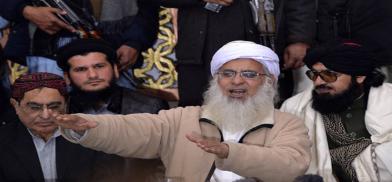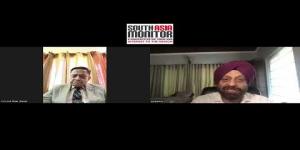Is Pakistan headed for Lal Masjid 2.0? Maulana’s return may trigger another crisis
When Nawaz Sharif was Prime Minister, Aziz had hailed and justified the terror attack on the Army Public School in Peshawar, where scores of students and teachers were killed, writes Mahendra Ved for South Asia Monitor

The Imran Khan government that secured the conviction and detention of Lashkar-e-Toiba (LeT) founder Hafiz Saeed earlier this month, ostensibly to escape censure for funding terrorism, is widely seen as dragging its feet while dealing with a cleric heading a mosque in the heart of the national capital Islamabad.
Saeed’s detention helped, but partially, in staving off action by the global UN watchdog Financial Action Task Force (FATF). It retained Pakistan on the ‘grey list’ with a warning and a four-month reprieve. But a 13-year old spectre threatens to return.
The government’s protracted talks with Maulana Abdul Aziz, viewed as "appeasement", have raised fears of another round of violence: Lal Masjid 2.0.
After several months of negotiations, the fortified mosque that housed highly motivated students, mostly girls, was razed in July 2007. Ten SSG commandos and 154 others died in the nine-day siege ordered by the then military ruler, General Pervez Musharraf.
Aziz and his brother, Maulana Rashid Ghazi, had then attracted around them a core of banned militant organisations, including Al Qaeda and Jaish-e-Mohammad. A state within a state, Lal Masjid became a magnet drawing fighters from Central Asian republics.
Analysts saw the event as the beginning of Musharraf’s downfall, that accelerated with his dismissing the country’s Chief Justice, which triggered countrywide protests.
Musharraf, who had ignored criticism from the West, had acted under Chinese pressure since the militant students had begun attacking Chinese-run massage parlours they alleged were dens of prostitution. Writing in the Dawn newspaper (February 22, 2020), Pervez Hoodbhoy, drawing a contrast with Hafiz Saeed’s detention, asks, “Could it be because no other country is particularly interested in reining in the Lal Masjid clerics?”
He notes that during the 2007 siege, “A massive cache of weapons was seized after the defenders were eliminated and placed in police custody. Weeks later, it disappeared mysteriously.” No FIR was filed against the clerics. Aziz walked out of jail as a free man.
Hoodbhoy draws a contrast in the Khan government’s approach to the Lal Masjid tangle with the way the Pashtun and Baloch activists are treated. Even when it comes to protests by a mainstream politician, Maulana Fazlur Rahman, who led an 11-day ‘march’ last November, the Prime Minister recently threatened to press sedition charges for seeking to topple his government.
The treatment of the Lal Masjid case has been similar by successive Pakistani governments. When Nawaz Sharif was Prime Minister, Aziz had hailed and justified the terror attack on the Army Public School in Peshawar, where scores of students and teachers were killed. Aziz threatened civil society activists who protested and little help or protection came to them from the government.
The crisis has returned to challenge the current government. Aziz was barred from entering the mosque some months ago, but managed to enter and again muster girl students. He has been demanding Rs 35 million and 20 kanals of land to rebuild the girls’ seminary, Jamia Hafza, run by his wife. He agreed to vacate the mosque on February 11, but did not. Nor were the girls left free to leave.
Under immense pressure, the authorities have allowed the local residents and male students of the religious seminaries to offer Friday prayers inside the mosque after a sizeable crowd gathered outside the premises, demanding that authorities open the mosque doors.
“To reward those who killed our soldiers and policemen is inexplicable and a prescription for a second round," Hoodbhoy has observed.
He also seeks rationale for this from the Imran Khan government that he believes is opposed to using “non-state actors,” as was the case in the past, to create trouble in Afghanistan and India.
He observes: “Extra-state actors provided by Aziz and others were cheap, disposable tools for pursuing foreign policy objectives in Kashmir and Afghanistan.” The strategy eventually backfired and Pakistan, he believes, “finally dumped it.
"The authorities must explain why they are choosing to appease those who fought the state and killed its soldiers and policemen. They have to tell us why they are handling with velvet gloves those responsible for the tragic sufferings of 13 years ago.” Else, he warns, “a second tragedy may not be far away.”
(The author is a veteran journalist and commentator)










Post a Comment